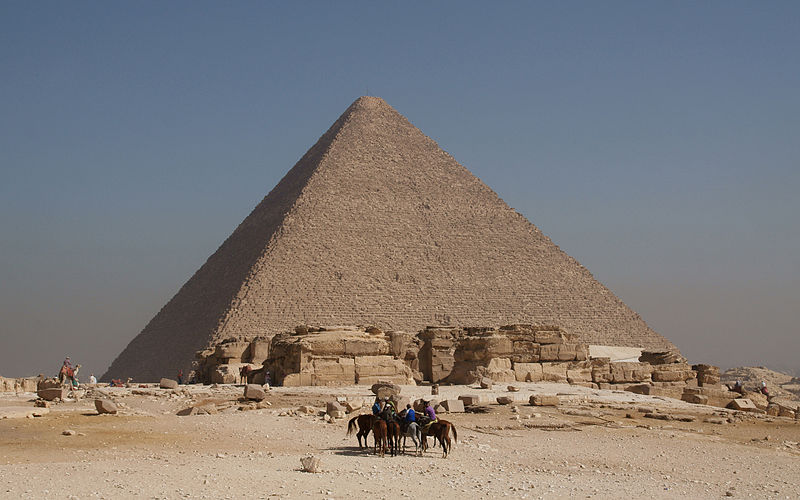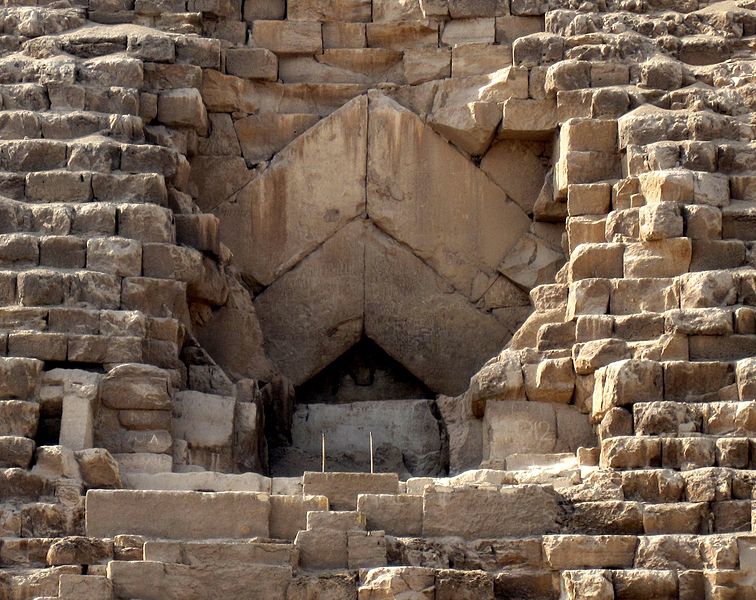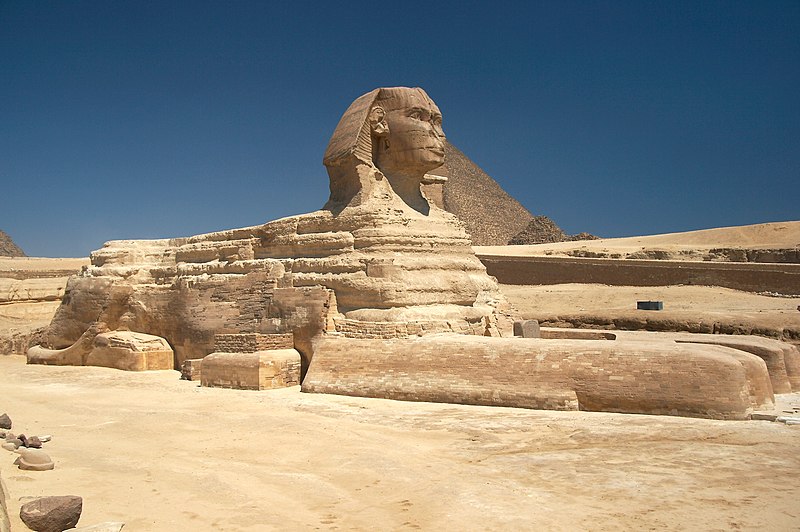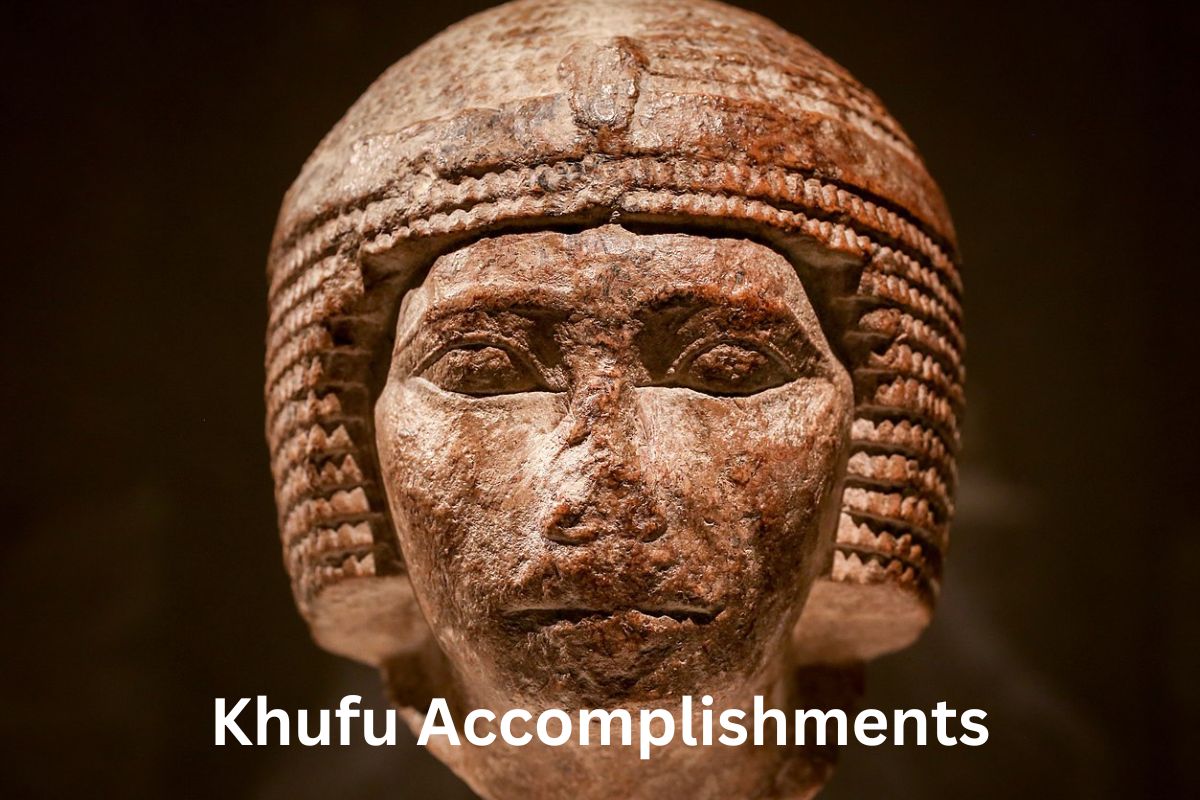Khufu, also known as Pharaoh Khufu or King Cheops, was an ancient Egyptian ruler who reigned during the 26th century BCE. His greatest accomplishment was overseeing the construction of the Great Pyramid of Giza, one of the Seven Wonders of the Ancient World.
Khufu’s reign marked a significant period in ancient Egyptian history, characterized by advancements in pyramid construction techniques and a consolidation of power.
His military campaigns defended Egypt’s borders, and he organized expeditions to acquire valuable resources. Khufu’s patronage of religious and architectural projects emphasized the importance of religious beliefs and left a lasting legacy on ancient Egyptian civilization.
Accomplishments of Khufu
1. Construction of the Great Pyramid of Giza
One of Khufu’s most significant accomplishments was overseeing the construction of the Great Pyramid, also known as the Pyramid of Khufu or the Pyramid of Cheops. This colossal structure, built on the Giza Plateau near Cairo, stands as the largest and most iconic pyramid in Egypt.

It was constructed using an estimated 2.3 million stone blocks, each weighing several tons. The pyramid’s purpose was to serve as Khufu’s final resting place, providing a grand tomb that would ensure his immortality in the afterlife.
2. Development of advanced pyramid construction techniques
Khufu’s reign witnessed remarkable advancements in pyramid construction techniques. The construction of the Great Pyramid required immense engineering skill and precision.
Also Read: Facts About Khufu
Khufu’s architects and builders perfected the art of quarrying, cutting, and transporting huge limestone blocks, using sledges, ramps, and possibly a system of pulleys and levers.
The precise alignment of the pyramid’s sides and its internal passages, chambers, and ventilation shafts demonstrated the sophisticated understanding of geometry and astronomy during Khufu’s time.
3. Creation of a monumental tomb for his afterlife
The construction of the Great Pyramid was not solely a grand architectural achievement but also a testament to Khufu’s desire for an elaborate burial place.
Ancient Egyptians believed in the afterlife and the pharaoh’s divinity, and it was essential for them to provide their rulers with magnificent tombs and all the necessary provisions for the afterlife.

The Great Pyramid served as Khufu’s eternal resting place, filled with treasures and items believed to be essential for his journey into the next world. It was a reflection of his power, wealth, and divine status as the pharaoh of Egypt.
4. Organizing expeditions to the Sinai Peninsula for resources
Organizing expeditions to the Sinai Peninsula for resources: Khufu recognized the importance of acquiring valuable resources for the prosperity and development of ancient Egypt.
He organized expeditions to the Sinai Peninsula, a region known for its rich deposits of copper and turquoise. These expeditions aimed to secure these resources, which were highly sought after for their use in craftsmanship, trade, and religious rituals.
By obtaining these resources, Khufu ensured a steady supply for his kingdom and contributed to the economic growth and stability of ancient Egypt.
5. Consolidation of power and centralization of the kingdom
Khufu’s reign was marked by a strong centralization of power. He established a robust bureaucracy to administer the kingdom efficiently. By centralizing control, Khufu asserted his authority over Egypt’s resources, land, and people.
This consolidation of power allowed him to maintain stability, enforce laws, and effectively govern the kingdom. Khufu’s strong leadership and centralized administration laid the foundation for a well-organized and prosperous society during his reign.

6. Promotion of economic prosperity and trade
Under Khufu’s rule, Egypt experienced significant economic prosperity. The kingdom benefited from increased agricultural productivity, efficient resource management, and the expansion of trade networks.
Khufu’s expeditions to the Sinai Peninsula and other regions not only secured valuable resources but also facilitated trade relationships with neighboring regions. The influx of wealth and trade goods contributed to the economic growth of Egypt, enabling the development of infrastructure, public projects, and cultural patronage.
The economic prosperity during Khufu’s reign had a positive impact on the standard of living for Egyptians and reinforced the pharaoh’s power and prestige.
7. Leading military campaigns to protect Egypt’s borders
Khufu understood the importance of maintaining the security and stability of Egypt. He led military campaigns to safeguard the borders and protect the kingdom from external threats.
These campaigns aimed to defend Egypt’s territorial integrity, deter potential invaders, and establish Egypt as a dominant power in the region. By demonstrating military strength and protecting the kingdom, Khufu ensured the safety of his subjects and maintained Egypt’s influence and prestige.
8. Commissioning of temples and religious projects
As a pharaoh, Khufu held a significant role in promoting and maintaining religious beliefs and practices. He commissioned the construction and renovation of several temples and religious structures throughout Egypt.
These temples served as places of worship, honoring the gods and goddesses of the Egyptian pantheon. They also reinforced the divine authority of the pharaoh and promoted religious rituals and ceremonies that were vital to the spiritual well-being of the kingdom.
9. Patronage of the arts, supporting various artistic forms
Khufu was a patron of the arts, providing support and encouragement to artists and craftsmen during his reign. This patronage led to a flourishing of artistic expression in ancient Egypt.
Sculptors, painters, jewelers, and other artisans created exquisite works of art, reflecting the beauty, symbolism, and mythology of the time. Khufu’s support of the arts contributed to the preservation and advancement of Egyptian artistic traditions and added to the cultural richness of his kingdom.
10. Leaving a lasting legacy and influencing future pharaohs and architectural practices
Khufu’s accomplishments left an indelible mark on ancient Egyptian history. The construction of the Great Pyramid, his architectural innovations, and the advancements in pyramid construction techniques set a standard for future pharaohs and shaped the architectural landscape of Egypt.
The Great Pyramid served as a symbol of Khufu’s power and authority, and its grandeur inspired awe and admiration for generations to come.
Additionally, Khufu’s centralization of power, economic prosperity, and military campaigns influenced the governance and policies of subsequent pharaohs, leaving a legacy that extended beyond his reign.
